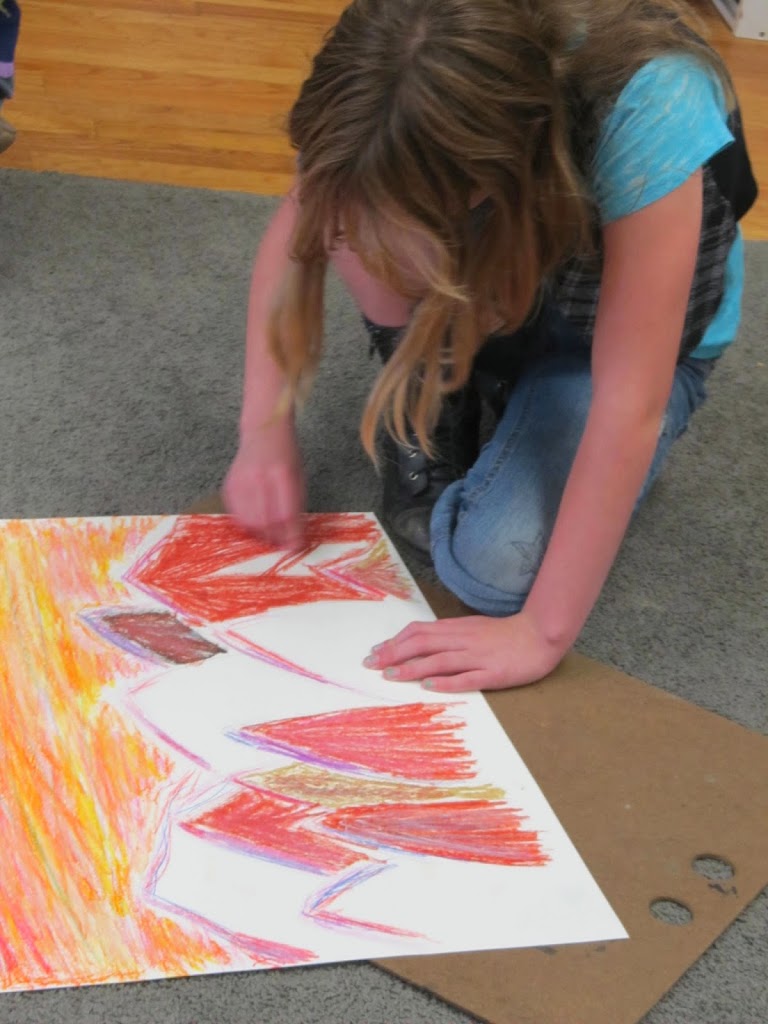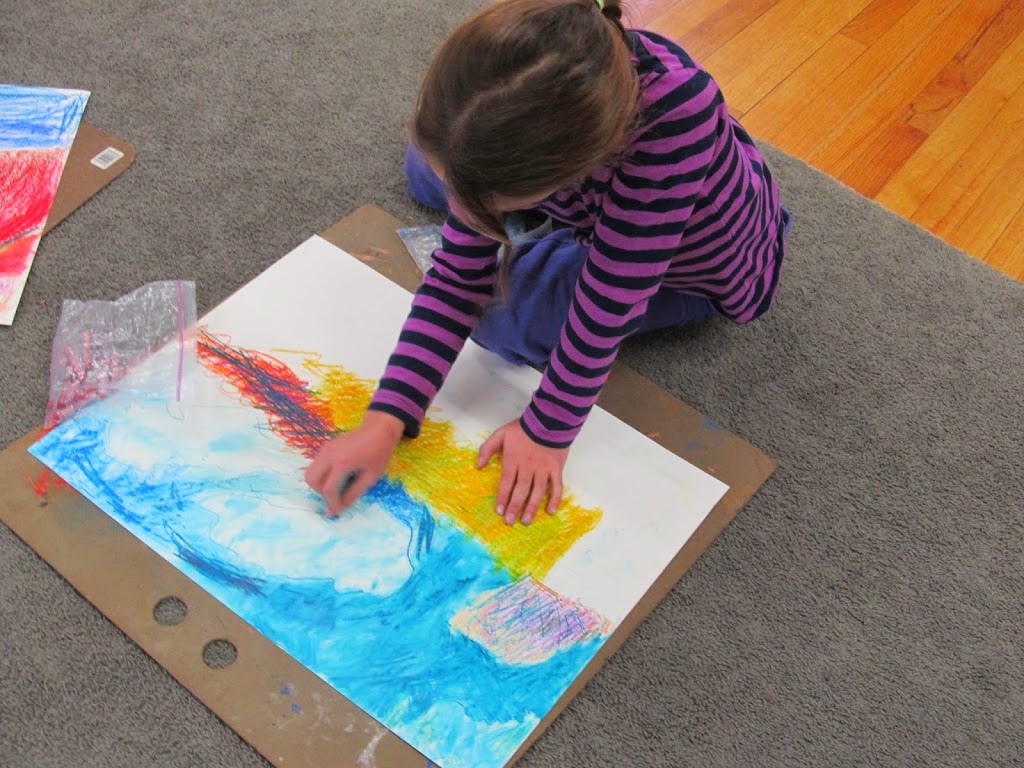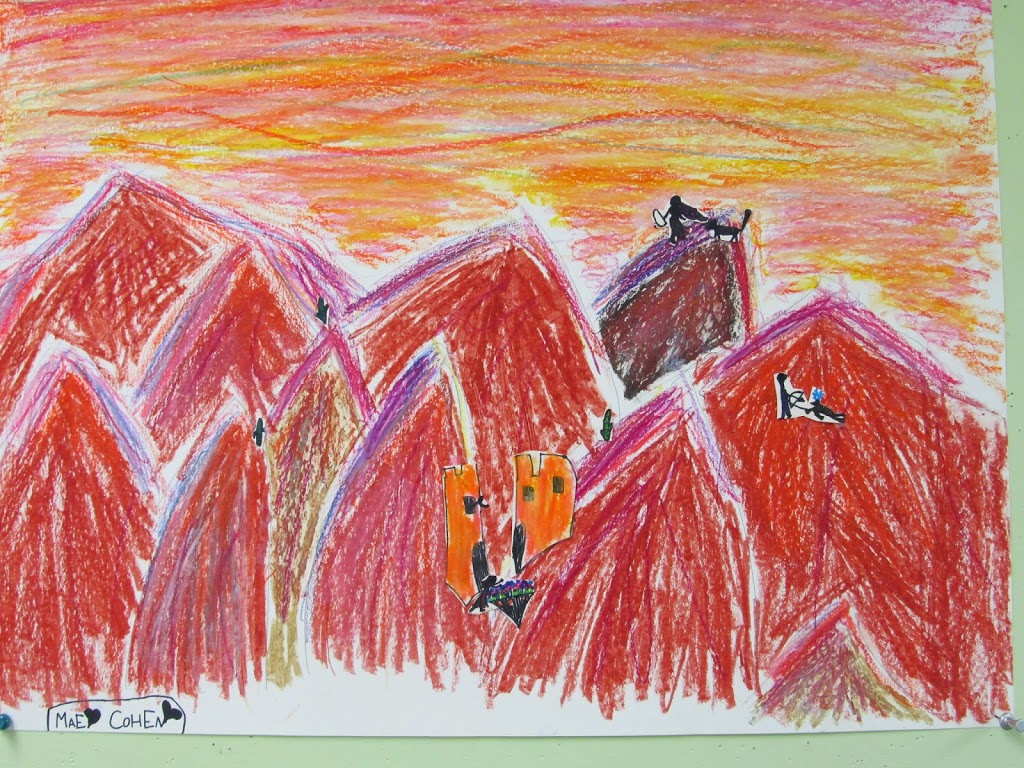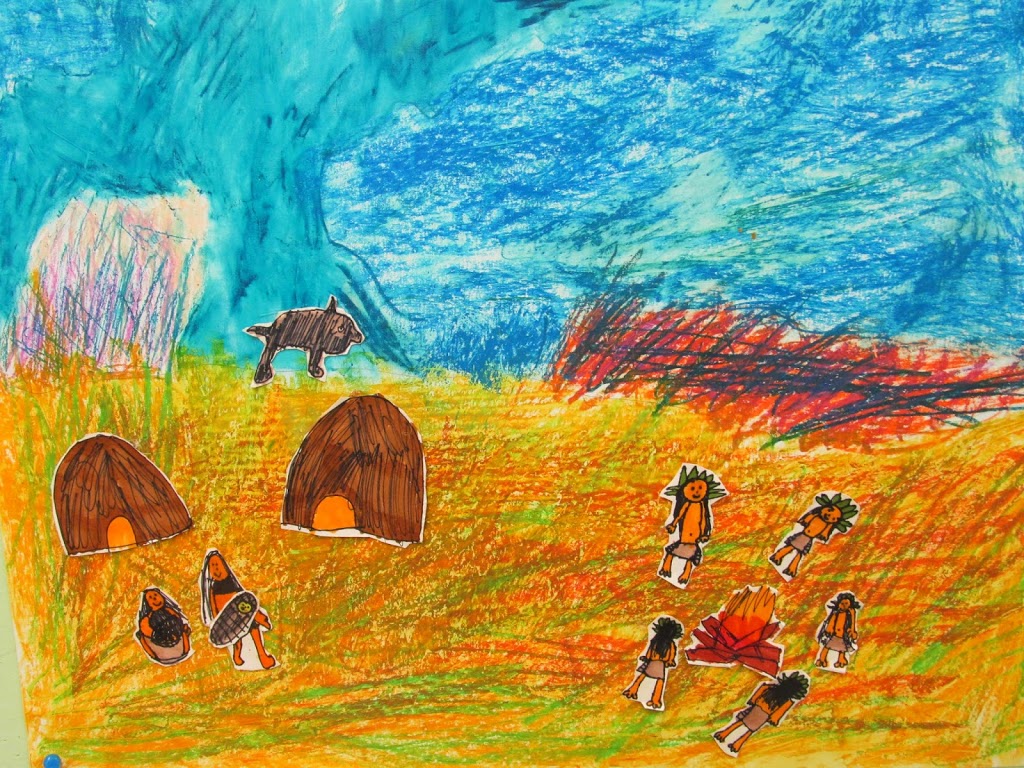We started our unit by studying physical maps of the United States. We also looked at and discussed maps that show climate, and precipitation. Then we studied the biomes of North America and compared their boundaries to the physical map.
After reading about each biome and sharing what each had to offer in terms of plants, wildlife and “abiotic features,” we colored our own biome map of North America. Given all this information, the children were then asked to consider what the life of an indigenous tribe living in each biome would be like. They had to identify sources of food and water and other resources. Would the tribe be nomadic or settled? Our goal was for children to grasp how the culture of each tribe is affected by the geography of the land.
In class the teacher modeled how to read for information about a tribe – we chose the Sioux. As we read from a picture book the children identified important information we will be using later. Children were then assigned their own individual tribe, and given picture books describing their homes, clothing, foods, and way of life. They soon learned whether their predictions of whether the tribes would be nomadic or settled were correct. Children looked for, and made notes about their tribe’s beliefs, tools and weapons, language (was it oral or written?) and its many art forms. To support their research each child was assigned an historical fiction novel set within their biome. In small groups children will share what important cultural information each author included in the book about the tribes living there.
Then each child started a long-term art project depicting the tribe they researched and illustrated as much of their culture as possible.



